|
Castle
Bytham
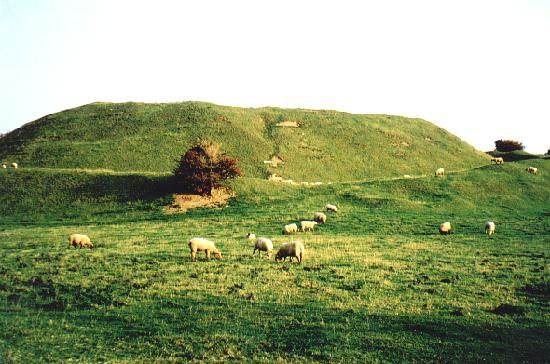
Castle Bytham,
eight miles south west of Bourne, has the attractiveness of all hillside
villages: a little stream in the valley, flowing to the River Glen, the houses
on one side climbing to the hilltop church, and on the other side the great
earthwork remains of a castle built by Norman lords but long since vanished. The
huge grassy site is still an impressive spectacle and it is not difficult to
picture a strong fortress standing here, dating back to the Norman invasion of
Saxon England (see box below).
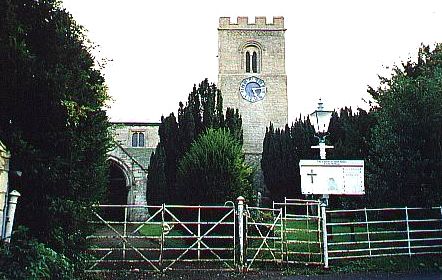 |
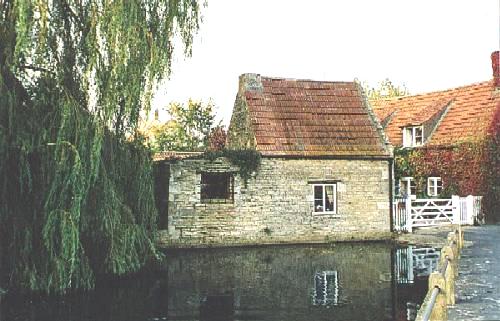 |
|
St James' Church
(left) and the village pond (right). |
The duck pond at Castle Bytham is much photographed and presents one of the most attractive village views in South Lincolnshire. In past times, before the village had a piped water supply, it was used by farmers for cleaning their equipment and livestock. Sheep and cows would be driven into the water and washed down followed by the heavy horses with their hay wains and other carts. The bottom is now thick with mud and in dire need of dredging, a move that is being resisted by the parish council who fear that it may be environmentally damaged. The tiny stone building on the edge of the pond is 300 years old and was originally the water keeper's cottage. He was paid by the parish to ensure that the level of the pond was maintained to avoid flooding the main street. It is now privately owned and used only for storage purposes and is part of Brooklyn Cottage, the creepered property of similar age that can be seen fronting the main street. Standing on the very edge of the village pond is one of the prettiest small cottages in Castle Bytham and on a summer's day it presents a picture of rural charm and tranquillity.
St James' Church has a sturdy tower with 13th century lancets, 15th century battlements and an 18th century sundial inscribed with the old pun Bee in Thyme. The nave is part of a Norman church and has an arcade of three round arches on octagonal pillars, built when the Norman style was waning. There is a fine brass candelabra made just after Waterloo and in the corner of the nave is a ladder which once played a part in the customs of Merrie England, an inscription stating that This ware the May Poul, 1660. In the churchyard is a stone bench, a modern addition, where mourners can place flowers against engraved plates that remember their loved ones who have been cremated and do not therefore have a traditional tombstone. By the side of the church porch are two mediaeval stone coffins, covered with undergrowth and, because of their antiquity, deserving of a tidier and more prominent site.
This short stretch of road immediately below the village High Street is Heathcote Road, one of the most attractive in Castle Bytham and is named in memory of the Heathcote family who were landlords here in centuries past. Their interest in this village dates back to the 18th century when they had already become major landowners in the parish. A map of 1858 shows that Robert Heathcote had by that time bought out most of the smaller landowners but when he died in 1917 his entire estate was sold at public auction, a total of 46 lots comprising 1,285 acres of land, several farms, the lime quarry, the Post Office, two inns and many private houses, cottages and woodland. The sale led to the slow but inevitable demise of the landlord and tenant relationship and to the situation today in which the majority of these properties in the village are now privately owned.
A colourful display from flowering window boxes greets summer visitors to the Castle Inn at Castle Bytham while further up the main street, but on the opposite side of the road, is another historic inn called the Fox and Hounds.
The Manor House can be found on the main road up on the hill, partly hidden by a stone wall, and is said to be 17th century but may be a little later. It has a symmetrical three-bay front and there are lights to the windows on the left and right of the doorway.
The 19th century Wesleyan Church at Castle Bytham has been restored as a family home, retaining many of the original features including the bell-cote although a modern weather vane has been added and its new name of The Old Chapel adorns the side wall in wrought iron. The four stone tablets incorporated in the gable end when it was opened on 13th July 1899 have been preserved. They record the names of the church worthies who laid them, Mrs AW Squires, Mrs Fred R Bell of Stamford, Mrs William Smith of Langley Mill and Mrs W Hudson Smith of Scarborough. This was very much an occasion for the ladies and one wonders where their husbands were on this occasion.
|
Glen House, once a farmhouse and designed in the manorial style, dates from the
17th century and is an elegant addition to the street scene in
Swayfield End. It has an associated circular dovecote with 400
roosting holes, no longer used but still in good repair. The house
built of dressed stone and Collyweston slate, is currently the home of a local doctor. |
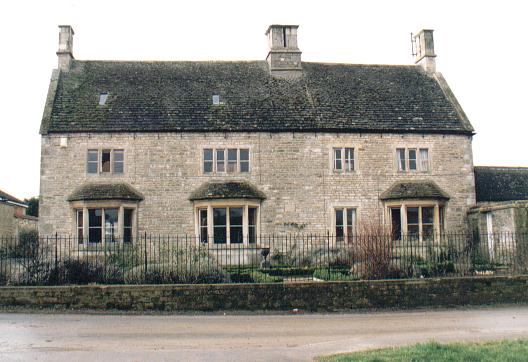 |
The village has been prone to flooding over the years but the worst such disaster was in the summer of 1922. It started raining on the Saturday evening of the August Bank Holiday weekend and continued through until Monday when the village was flooded from
end to end. Only those houses raised above the level of the road escaped and Castle Hill Farm was one of them where the waters stopped two yards from the back door.
Villagers helped farmers rescue their livestock, hens, chickens and pigs, while tree branches and other debris sailed down the main street where a group of youngsters had managed to find a boat to help rescue anyone who was trapped. The top of the marquee that had been erected for the holiday fete could be seen protruding above the flood water on Castle Hill field. The water subsided quickly when the rain stopped but most houses suffered serious damage and some had thick mud three feet high on the walls while carpets and furniture in downstairs rooms were ruined.
The village pump at Castle Bytham
was a gift from Mr Robert Bowder, a local shopkeeper and baker, to commemorate Queen Victoria's Golden
Jubilee in 1887, and anyone could draw water provided they paid one penny per year each for
using it. Thereafter, it became known as the Victoria Well and a plaque was
mounted on the nearby wall to commemorate its installation.
| It became redundant in 1938 when mains water was piped in and
for the next thirty years, it fell into disuse and became an
eyesore. But in 1967, villagers decided to preserve it as a feature of
the street scene and a team of volunteers was recruited to carry
out refurbishment, headed by Alfred Tilley, who lived at No 34
Main Street, and had long associations with the village.
With the help of Mr Edward Dobson, the iron and
woodwork was restored and painted and oak chains and posts fitted and by October
1968, the
pump was back in working order and a reminder of times past.
The pump was originally the only source of water
for the village and was therefore in constant use and in time of
drought, particularly in 1933, farmers would queue up to fill
their water carts with supplies for
their cattle. |
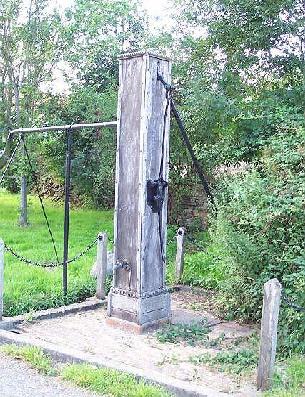
|
|
THE CASTLE AT CASTLE BYTHAM |
|
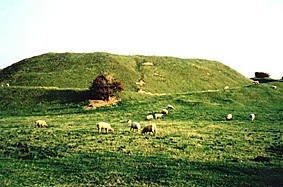 |
 |
|
IT IS GENERALLY claimed that Castle Bytham may have
been the site of the first Norman castle in England, built in 1086 and
held by Drew de Beurere, the Lord of Holderness. This is partly true in
that the village does claim to have had a castle 1,000 years ago
although its origins are obscure.
The great earthworks which remain in the village are reputedly the
remains of the castle built by Norman lords but long since vanished
although the huge grassy site is still an impressive spectacle and it is
not difficult to picture a strong fortress standing here dating back to
the Norman invasion, as with the example pictured above, the Château de
Gisors, near Paris, built in the 11th century. The Saxon owner of this
site was Morcar, a Northumbrian earl who vainly tried to resist William
the Conqueror and died in prison while his stronghold, finished by the
Conqueror's own half-brother Odo, stood until it was swept away during
the Wars of the Roses and today the site is occupied only by sheep.
A castle in past times was the fortified residence of a lord although it
is now generally visualised as a huge stone building with towers,
battlements, a portcullis and drawbridge. The actual definition is that
of a defensive structure which was one of the main symbols of the Middle
Ages, deriving from the Latin castellum, a diminutive of
castrum which means fortified place. Many were merely fortified
residential halls, sometimes enclosed by a defensive wall, which
functioned as the home of some important person in the locality such as
a chieftain. The word castle (castel) was introduced into English
shortly before the Norman Conquest to denote this type of fortress, then
new to England, brought in by the Norman knights and traditionally in
Britain it has also been used to refer to prehistoric earthworks, many
of which survive today and much confusion exists between the two.
A detailed but speculative appraisal of the castle can be found in The
History of Castle Bytham by Richard Foers (1999, updated 2000) and
although it is not mentioned in the Domesday Book of 1086, he suggests
that the listing of three iron forges is indicative of castle building
while Lord Drogo, who owned land in the vicinity, was also Lord of the
Manor of Holderness in North Lincolnshire thus giving it the Holderness
connection.
The Domesday Book may be taken as an authoritative account of what and
what did not exist in the country at that time, forming a remarkable
record of the state of England in the mid-1080s and was considered so
comprehensive that one description said: "So very thoroughly did William
have the enquiry carried out that there was not a single piece of land,
not even an ox, cow or pig, which escaped its notice." If, therefore, a
castle is not mentioned at Castle Bytham, which it is not, then we may
assume that there was not one.
The site is listed as an ancient monument by English Heritage but their
description is obscure and even romanticised and suggests a motte and
bailey castle of a rare type, having an internal barbican, one of the
very few examples in this country, while after extensive research,
Richard Foers claims that it was occupied between 1085 and 1554 by which
time it may have become a ruin. In the meantime, the castle was
destroyed in 1221 by Henry III but rebuilt in 1370 and last occupied in
1412 although there is no documentary proof of this. It was burned down
during the Wars of the Roses in 1455-1485 and as late as 1542, the
antiquarian John Leland (1502-1550), during his six-year tour of England
identifying ancient monuments on behalf of Henry VIII, wrote: “I saw
Castelle Bitham wher yet remayne great Waulles of building.”
There are no records to suggest either occupancy or ownership of a
castle after 1554 which is much the way of many similar castles that
have now disappeared. There is also the question of the type of
structure it may have been because the first stone fortresses in this
country were built by the Normans and as this one is reputed to have
been started by Morcar, it is more likely to have been a wooden
fortified manor house similar to Bourne Castle rather than the massive
battlemented construction we have come to associate with Hollywood
films. |
|
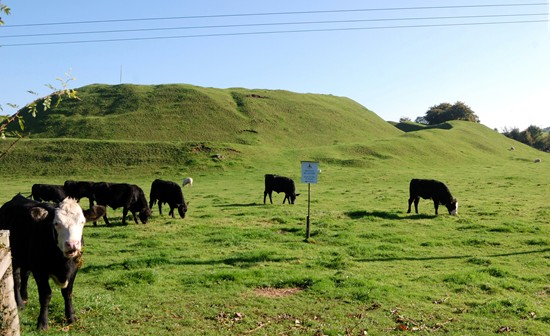 |
|
PHOTO ALBUM |
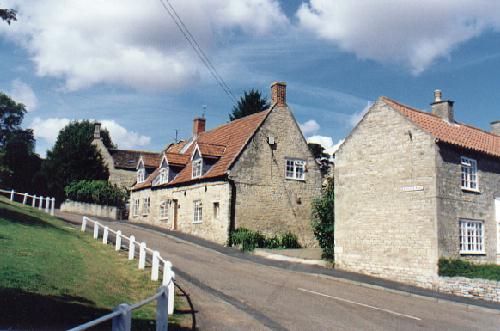 |
|
The short stretch of road immediately below the
High Street is named after the Heathcote family of landed gentry whose
interest in the village dated from the 18th century although most of the
properties are now privately owned. |
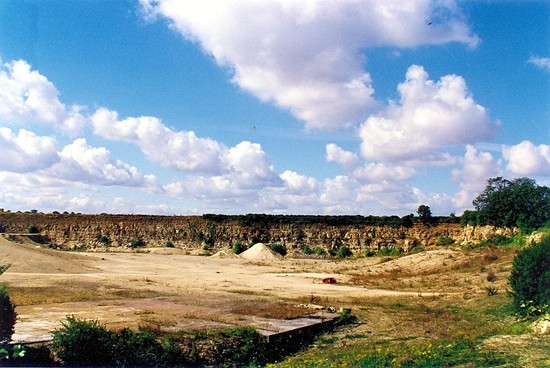 |
|
Artefacts from the Bronze Age and Saxon times were
found after this limestone quarry opened circa 1855 and it continued in
production until recent years but has now been left to return to nature
and is a Site of Special Scientific Interest although recently used as a
temporary car park for the annual village mid-summer fair. |
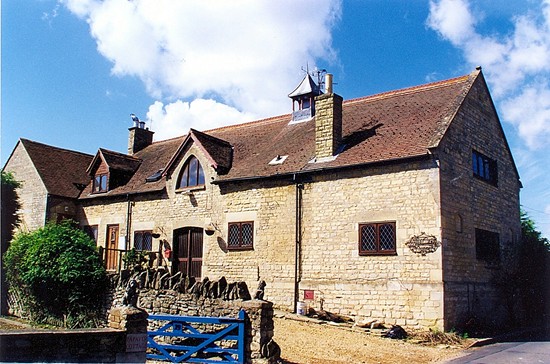 |
|
The Wesleyan Chapel was built in 1836 and enlarged
and restored later in the century but was closed for services in
December 1974 when the building was sold for development and converted
for use as a private residence in 1978, now known as The Old Chapel. |
|
FROM THE ARCHIVES |
 |
|
The Spalding to Saxby railway line which was
completed in 1893 ran through Castle Bytham in past
times when the
village had a busy railway station which is pictured here in May 1956 shortly before it
closed. |
|
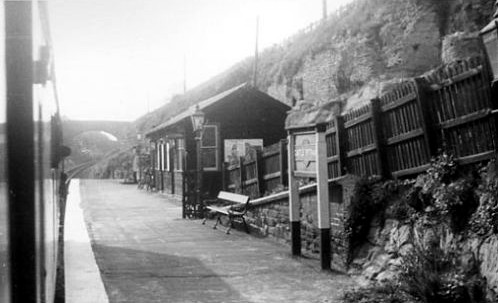 |

Go to:
Main Index Villages
Index
|












